#Women’s Indian Association
Text
#OTD in 1878 – Birth of Irish women’s rights activist, Margaret (Gretta) Cousins, in Boyle, Co Roscommon.
Margaret (Gretta) Cousins, theosophist and feminist, was born Margaret Gillespie, daughter of a law clerk, in Boyle, Co Roscommon, and lived out her commitments on two continents.
She took a music degree in Dublin in 1902, marrying James Cousins in 1903. She worked as a part-time music teacher, and joined him as a vegetarian, theosophist and medium, among Dublin’s literary circles. This activism…
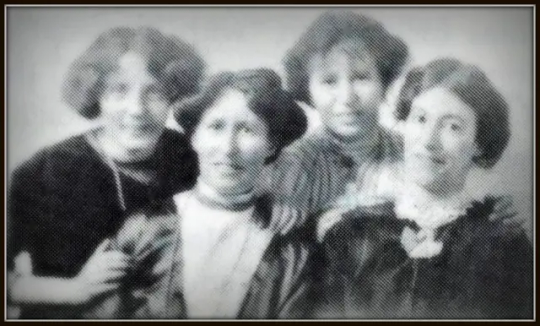
View On WordPress
#All-Asia Women’s Conference#All-India Women’s Conference#Boyle#Co. Roscommon#feminist#Gandhi#Hanna Sheehy-Skeffington#India#Irish Women’s Franchise League#Irish Women’s Suffrage#James Cousins#Local Government Association#Margaret (Gretta) Cousins#Margaret Gillespie#Theosophist#Women’s Indian Association
4 notes
·
View notes
Text
"We want justice,” doctors chanted in Kolkata, waving handwritten signs that read, “No safety, no service!”
16 Aug 2024
Indian doctors have called for a nationwide shutdown of hospital services as public fury over the rape and murder of a trainee medic in the eastern city of Kolkata last week mounts.
The Indian Medical Association (IMA), the country’s largest grouping of medics with 400,000 members, said the 24-hour shutdown would be implemented on Saturday, affecting most hospital departments except for essential services.
The shutdown comes after thousands of people took to the streets in several cities to express their outrage at the rape and murder of a 31-year-old trainee doctor, whose brutalised body was found on August 9 at Kolkata’s state-run RG Kar Medical College and Hospital.
On Friday, large protests were held in various cities – including Kolkata, the capital of West Bengal state, Mumbai in the west and Hyderabad in southern India – demanding justice and better security at medical campuses and hospitals.
“We want justice,” doctors chanted in Kolkata, waving handwritten signs that read, “No safety, no service!”
Demonstrators held banners calling for accountability as they gathered near parliament in New Delhi.
“Doctors, especially women are vulnerable to violence because of the nature of the profession. It is for the authorities to provide for the safety of doctors inside hospitals and campuses,” the IMA said in a statement issued on Thursday on X.

Doctors hold posters and shout slogans during a protest condemning the rape and murder of the trainee doctor, at a medical college in Ahmedabad, western India, on August 16 [Amit Dave/Reuters]
Multiple medical unions in both government and private systems have backed the strike.
Doctors in government hospitals across several states on Monday had halted elective services “indefinitely” in protest.
Indian media have reported that the murdered doctor was found in the teaching hospital’s seminar hall, suggesting she had gone there for a brief rest during a long shift.
An autopsy confirmed sexual assault. Doctors say the circumstances of the rape point to the vulnerability of medics left without proper protection and facilities.
Though police have detained a man who worked at the hospital helping people navigate busy queues, state government officers have been accused of mishandling the case.
On Wednesday night, the hospital where the trainee doctor was killed was attacked. Police did not identify who was behind the rampage, but said they have arrested 19 people so far.
Little has changed
There were more than 31,000 reported rapes in India in 2022, the latest year for which data is available, according to the National Crime Records Bureau (NCRB).
The gang rape and murder in 2012 of a young woman on a bus in Delhi, northern India, led to nationwide protests and outrage over the country’s failure to tackle sexual violence against women.

Since 2012, the government has brought in sweeping changes to the criminal justice system, including tougher sentences and the death penalty for repeat offenders.
Conviction rates for rape ranged between 27-28 percent from 2018-2022, according to NCRB data.
The definition of rape has also been widened to include non-penetrative acts and the age threshold for rape trials lowered so 16-year-olds can be tried as adults.
But campaigners say little has changed despite the tougher laws.
Criminal lawyer Rebecca M John, who has represented many rape victims, said some rapists still believe they can get away with their crimes.
“One of the factors would be the absence of fear of the law,” she said.
Many cases of crimes against women also go unreported because of the stigma surrounding sexual violence and a lack of faith in the police.
#India#Kolkata#The Indian Medical Association (IMA)#RG Kar Medical College and Hospital#Male violence#Violence against women#There were more than 31000 reported rapes in India in 2022#May she Rest In Peace
23 notes
·
View notes
Text


Caroline Weldon (born Susanna Karolina Faesch; December 4, 1844 – March 15, 1921) was a Swiss-American artist and activist with the National Indian Defense Association. Weldon became a confidante and the personal secretary to the Lakota Sioux Indian leader Sitting Bull during the time when Plains Indians had adopted the Ghost Dance movement. Via Wikipedia
(1) Sitting Bull, by Caroline Weldon, 1890, oil on canvas

Sioux Native American Leader, After His 1882 Surrender, With His Family Outside Their Tepee At Fort Randall, Dakota Territory; The White Woman Is Catherine Weldon Of Boston (source)
Read more & and watch: https://www.history.com/news/caroline-weldon-sitting-bull-portrait-painter-native-american-activist

#Caroline Weldon#art by women#Susanna Karolina Faesch#Sitting Bull#National Indian Defense Association#woman walks ahead
11 notes
·
View notes
Text
Trump at NABJ Racist, "Is she Indian or is she Black" Attack Line Explained
Reading time: 4 minutes
We all know that Trump openly questioned Harris' ethnic identity. The only question is why? Why would he do such an offensive thing? He needs to expand his racist base, that's why.
The Freak Out Over Trump’s Open Naked RacismVideo Clip of Trump’s Indian or Black CommentsAnalyzing Trump’s Motives for His Outrageously Racist RemarksAttack the Reporter When Asked a Difficult QuestionThe More Outrageous the Lie or Claim, the Stronger the Reaction, the Better the Sound BitesUnderstanding Trump’s Racist Agenda and GoalAppealing to White Nationalists and the Openly RacistReaching…
#A More Perfect Union#All People Are Created Equal#Allan Bakke#Black#Black Jobs#Donald Trump#Election 2024#Harris Campaign#HBCU#Howard University#Indian#Kamala Harris#NABJ#National Association of Black Journalists#News#Politics#Rachel Scott#Racism#Racist Adjacent#Racist Curious#Racist Remarks#Rasim#Trump#White Dudes for Harris#White Nationalists#White Women for Harris
1 note
·
View note
Text

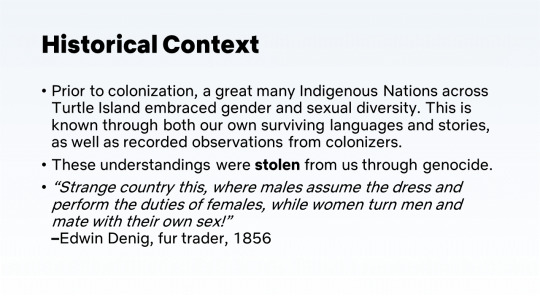



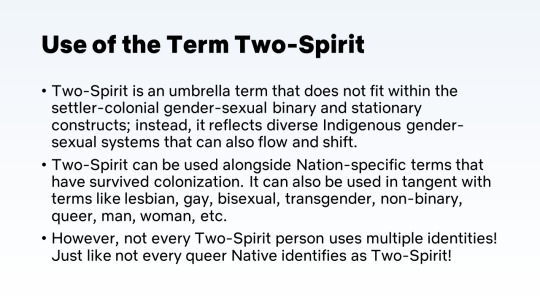
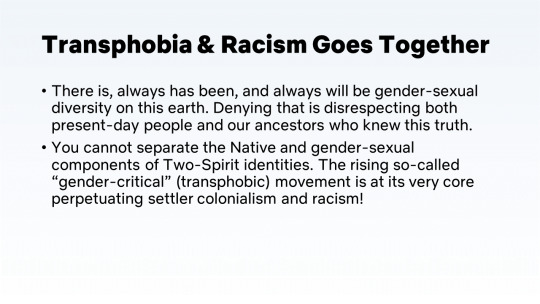

I was originally planning on holding off sharing this until June, but then decided to hell with that; why wait?
FURTHER RESOURCES:
Intersections: Indigenous and 2SLGBTQQIA+ Identities – this booklet from the Native Women’s Association of Canada is more intended towards 2S folks, but is still a great read for anyone.
Two Spirits, One Voice – This video from Egale is a great, no more comments needed.
A Two-Spirit Journey: The Autobiography of a Lesbian Ojibwa-Cree Elder – This book by Ma-Nee Chacaby can be a difficult and emotional read, but very much worth it.
Becoming Two-spirit: Gay Identity and Social Acceptance in Indian Country – I have yet to read this book by Brian Joseph Gilley myself, but heard positive things about it.
Please feel free to reblog with more suggestions, if you have them!
8K notes
·
View notes
Text
Google Doodle Honors Dr. Kamala Sohonie: Celebrating a Trailblazing Indian Biochemist
On the occasion of the 112th birthday of Indian biochemist Dr. Kamala Sohonie, Google Doodle commemorates her pioneering contributions. Born on June 3, 1912, Dr. Sohonie was the first woman to obtain a doctorate in science from an Indian university. Her groundbreaking research focused on the metabolism of carbohydrates and the role of insulin in diabetes. Dr. Sohonie's achievements paved the way for women in the field of scientific research and inspired countless others. She also played a significant role in establishing the Indian Women Scientists' Association. Today, we celebrate the remarkable life and legacy of Dr. Kamala Sohonie, a true trailblazer in the world of science.
#Google Doodle#Dr. Kamala Sohonie#112th birthday#Indian biochemist#Pioneering contributions#Women in science#Scientific research#Carbohydrate metabolism#Role of insulin in diabetes#Indian Women Scientists' Association#Trailblazer#Legacy#Scientific achievements#Inspirational figure#Commemoration
0 notes
Text
Indian cricketer Jhulan Goswami took retirement from cricket
The Indian women's cricket team defeated England by 16 runs in the third and final ODI to clean sweep the three-match series. With this, Jhulan Goswami has said goodbye to international cricket forever. read more.......
#cricket latest news#indian cricket news#indian cricketers association#sports#music#web series#indian hindi#india women#indian womens cricket#indian womens team#indian womens hockey
1 note
·
View note
Text
june 21 is national indigenous peoples day up here in canada; a day focused on celebrating the arts and cultures of our indigenous neighbours and communities.
if you’re looking for ways to support, or generally further your education on indigenous history, here are a bunch of links to help you get started! please go further and look up events hosted by your local community specifically, as some may not be listed on the sites below.
remember that if you cannot attend events or monetarily support businesses - you can always boost indigenous artists and voices online too.
indigenous tourism; lists businesses, events, and other indigenous-owned / led programs for the respective province or territory
indigenous tourism canada [generalized resources, event listings etc]
yukon
northwest territories
nunavut
british columbia
alberta
saskatchewan
manitoba
ontario
quebec
newfoundland and labrador
new brunswick
nova scotia
prince edward island
art
bill reid gallery of the northwest coast
lattimer art gallery
native northwest [while NNW itself is not indigenous-owned, it is a good way to discover artists and purchase their work. some artists sell on other sites too, so look around]
strong nations [sells books by indigenous authors]
education and resources
two-spirited people of manitoba
alberta indigenous history timeline [pdf]
alberta indigenous history resources
british columba history timeline
list of first nations peoples [wikipedia; could be incomplete / inaccurate]
cbc indigenous [indigenous-focused news]
missing and murdered indigenous women and girls
national centre for truth and reconciliation
native land interactive map
orange shirt day
qikiqtani truth commission
lil’ red dress project
whose land interactive map
charities / support / donations
clan mothers healing billage & knowledge centre
first nations health authority
indian residential schools survivor society
indigenous peoples resilience fund
qajuqturvik food bank
niqinik nuatsivik nunavut food bank
nunavut food security coalition
reconciliation canada
urban native youth association
additional links are always appreciated
2K notes
·
View notes
Text
Solar return observations- Part 3
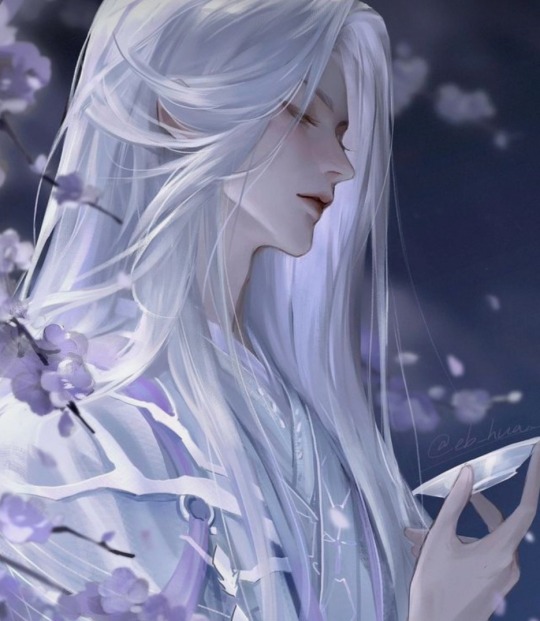
(the artist is @eb_hua on twitter)
Saturn in 10th is a frustrating placement (my mom had it last year and basically with this you feel financially helpless, you keep on trying and trying but nothing works, but the good thing is that 2-3 months before your next birthday, you're gonna hit the jackpot, so don't worry too much) (my sister also has it this year)
I have noticed that in every solar return chart that I've looked at, the chiron was in conjunction with the north node and it has happened way too many times for me to call it a coincidence. (do you have it as well, let me know) (according to my observations, the house that it's in represents the area where you'll experience pain but also by the end of the year, you're gonna be able to deal with the themes of that house in a better way, am I making sense??) just let me know if you have any questions about this placement, I think it's very common
The year in which you have a gemini AC, you will focus a lot on building your professional network, a lot of communication, short distance travel and improving your relationship with your siblings, if you have any. (my sister has it this year and her master's will end on 29th April, she has applied to many places for a job and she's also coming to visit me, I'M GOING TO MEET HER AFTER 5 FUCKING YEARS😁😁)
Mars in 12th indicates a low libido, a very exhausting year in general, if you also have sun in 1st then... It can be pretty bad (it's like you KNOW that you need to stop procrastinating, but you really can't help it, so you look calm on the outside but your brain is like AKDHSGHSKGSKJDJK)
Jupiter in 10th in aries is a REALLY GOOD placement. (you get the courage to go after what you want, especially in terms of career) and if Jupiter is Trine/sextile with saturn, then it's even better

Uranus in 5th can mean having flings with people that are not your usual type. (one of my friends came to Italy this year, and the first thing she did was hook up with an Italian guy 😭😭, she's Indian)
Aries in 2nd is an impulsive shopping placement (if you have it and you think you need something, you don't) (one of my friends had this last year and he bought a hat for €150...... Yeah. He has saturn in 2nd this year and he's finally facing the consequences of his actions)
I know that saturn in 8th is associated with difficulties in sex and intimacy but there's another side to it (a lot of my friends have had this, and they became really mature about sexual matters, like if they were previously very into the hook up culture then that year they were more cautious and had this "I'm going to have sex with the person who I genuinely like or love" mentality)
This is very shocking but I looked at the solar returns of all the married couples I know and the year in which they got married, NONE OF THEM had a 7th house stellium 💀💀. For men, I didn't notice a pattern, but for women, 90% of them had Venus positively aspecting saturn (mostly, Trine and sextile but 2 had a conjunction)
My favorite solar return placement has to be mercury conjunct Jupiter, if its happening in capricorn or virgo, then you're really precise and direct with your words, a very leader type aura for that year. If it's in libra, then good for flirting and talking to your crush, there's a high chance they'll fall for your charms. If it's in pisces, then it's your sign to start a cult.
(all pictures are taken from Pinterest)
© martian-astro All rights reserved, 2024
#astrology content#astrology#astroblr#astrology community#solar return observations#solar return chart#solar return#astrology observations
633 notes
·
View notes
Text
#OTD in 1878 – Birth of Irish women’s rights activist, Margaret (Gretta) Cousins, in Boyle, Co Roscommon.
#OTD in 1878 – Birth of Irish women’s rights activist, Margaret (Gretta) Cousins, in Boyle, Co Roscommon.
Margaret (Gretta) Cousins, theosophist and feminist, was born Margaret Gillespie, daughter of a law clerk, in Boyle, Co Roscommon, and lived out her commitments on two continents.
She took a music degree in Dublin in 1902, marrying James Cousins in 1903. She worked as a part-time music teacher, and joined him as a vegetarian, theosophist and medium, among Dublin’s literary circles. This activism…
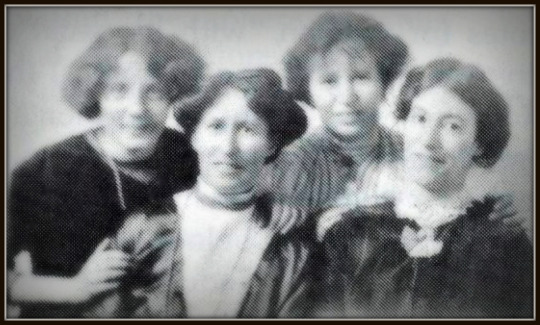
View On WordPress
#All-Asia Women’s Conference#All-India Women’s Conference#Boyle#Co. Roscommon#feminist#Gandhi#Hanna Sheehy-Skeffington#India#Irish Women’s Franchise League#Irish Women’s Suffrage#James Cousins#Local Government Association#Margaret (Gretta) Cousins#Margaret Gillespie#Theosophist#Women’s Indian Association
3 notes
·
View notes
Text

ONE PIECE Pirate AU
What if OP world had real pirate vibe / What if our 1700s had people strikingly similar to OP characters + magic
DISCLAIMER i have the opposite of Same Face Syndrom + cant draw women lol
yes the faces are real human ispired

LUFFY - Brazilian / Caribbean kid from a random ass poor village
Hat, vest, pants, sandals - made more historically accurate (mmha)

ZORO - Japanese but raised abroad in Turkey or sth idk
Hair - green hair dont exist lol
Shirt, pants, boots - mmha
Eyepatch - a piratey touch

NAMI - Swedish but adopted and raised in Spain or Italy or idk
Clothes - mmha + made her more tomboyish
Head cloth - piratey touch

USOPP - Italian mum + African father (unthinkable!) (european colonies in South Africa or sth)
Clothes mmha
The prankster he is, he carries fake prosthetic hook and peg leg and a fake swordsheath. I bet he has a fake parrot and an eyepatch he doesnt use.
The gun is real and replaces slingshot

SANJI - French cook in the Mediterrenean
Eyebrows - curly eyebrows dont exest stupid
Hair - mmha
Suit - mmha
Cigs - replaced with a pipe
Golden tooth - he got scurvy on that stranded island

CHOPPER - Canadian reindeer (caribou)
General look - now he look like a real reindeer huh. No wonder why he was feared by the peeps
Hat - early american settler-like
Pants - mmha + piratey stripes

NICO - Russian originally associated with mafiozo Krokodil
The dress is how i imagine her to dress like when working with Krokodil
Hat, boots - mmha + more piratey
Riding suit - she looked like cowboy in early OP so i gave her riding clothes

FRANKY - American, self-made clockwork cyborg who uses word "super" quite often (it was a thing in early 1700s!)
Hair - Cyan hair dont exist idiot + made it cool and epic for 1700 standards
Metal nose - screwed to skull
Shirt - mmha
Underwear - yes its underwear mmha
Robo parts - clockwork coz no steam engines back then + wooden doll-looking
Peg leg - hides a gun

BROOK - Austrian musician, his crew died hit by a plague
Hat - mmha
Afro - no afro in 1600-1700 sorry
Justacorps - 1600s-ish coz he old af
Yohoho

JIMBEE - Now a real FISHman, a real WHALESHARK and a real INDIAN (Oda said hes indian)
yup thats about that
FOLLOW FOR MORE
#my art#digital art#digital#one piece#one piece fanart#luffy#op#art#concept art#au#pirates#nami#roronoa zoro#monkey d. luffy#vinsmoke sanji#sanji#tony tony chopper#nico robin#one piece live action
116 notes
·
View notes
Photo
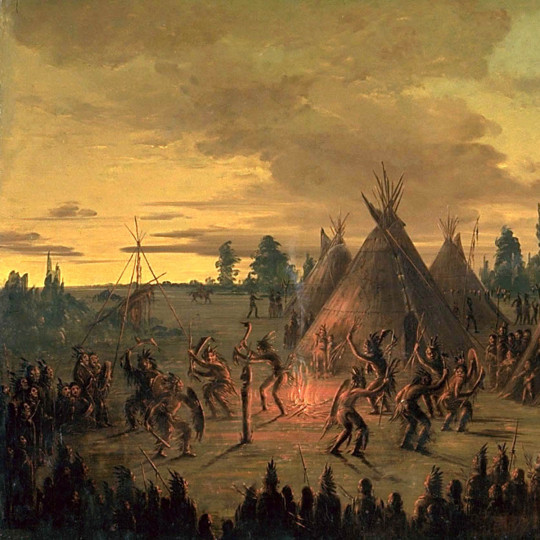
The Native Peoples of North America (also known as American Indians, Native Americans, Indigenous Americans, and First Americans) are the original inhabitants of North America believed to have migrated into the region between 40,000-14,000 years ago, developing into separate nations with distinct and sophisticated cultures. These autonomous nations spread from Alaska, through Canada, and the lower United States. The earliest periods of migration, settlement, and development are defined by archaeological evidence (spearheads, tools, monumental structures) from sites throughout North America and are most often referred to by the following terms: Paleoindian-Clovis Culture – c. 40,000 to c. 14,000 BCE Dalton-Folsom Culture – c. 8500-7900 BCE Archaic Period – c. 8000-1000 BCE Woodland Period – c. 500 BCE to c. 1100 CE Mississippian Culture – c. 1100-1540 CE During the Archaic Period, some Native populations moved from a hunter-gatherer paradigm to a more sedentary social model as evidenced by sites such as Watson Brake (c. 3500 BCE), Poverty Point (c. 1700-1100 BCE), and others of varying size, developed throughout the region during the Woodland and Mississippian Culture eras. The cultures that developed in and around these sites were distinct from one another but shared a worldview that included belief in a higher power and disembodied spirits, the value of community over individual needs, reciprocity in interaction with the environment and each other, the importance of ritual and tradition, the practice of warfare and slavery, and conservation of resources. Women were highly respected in the communities and frequently served as leaders or advisers in government. These separate communities developed into what are sometimes called 'tribes' (but more often referred to now as 'nations') at some point prior to c. 980 to c. 1030 CE when the first European settlement was established in North America by Leif Erikson at L'Anse aux Meadows, Newfoundland. By the time of the beginning of European colonization of the Americas in the 15th century CE, they were highly developed political and social entities associated with a specific region and a certain territory within that region. Although European expansion across Canada and the United States eventually deprived the indigenous peoples of their ancient lands, the nations still exist today and the image of the 'vanished Indian' is as much of a myth as the 'noble savage' or similar tropes developed by European and American scholars during the 19th and early 20th centuries.
124 notes
·
View notes
Text
Here's the full script for the most recent video, minus where I ad libbed:
Dr. Moumita Debnath, a 31 year old doctor trainee, was found dead on August 9th, 2024. After taking a break half-way through a 36 hour shift, her corpse was found on a blood stained mattress. Her body bore the wounds of torture, from the wounds to her eyes, her pelvis, genitals, arms and legs. As noted in The Publica’s report, “The post-mortem report also noted that over 150 mg of semen was recovered from the doctor’s body, indicating that up to 30 men could have been involved in the violation of Debath’s body. The normal volume of semen produced by a male upon ejaculation typically varies from 1.5 to 5.0 mg, according to the online medical encyclopedia MedlinePlus” (Biase). Her family was told that she died via suicide, though her wounds made it obvious that this was not the case; however, this claim allowed the principal of the school to avoid filing a police report. The attempts to hide the crime did not succeed, and have resulted in protests across India and the medical industry, both in response to the lack of protections for medical staff, and because of the attempt to hide the crime.
In the aftermath, searches for footage of Debnath’s gang rape have trended, as “According to Google Trends, queries such as “Moumita Debnath porn” and “Dr. Moumita Debnath video” have experienced surges across India, with “Moumita Debnath rap[e] video” experiencing a 110% increase in searches. As of the time of this writing, of all the queries associated with her name, “Moumita Debnath photo video” is the 5th most searched in India, while “Moumita Debath last video” is the 12th most searched overall” (Biase).
This isn’t the only horrific case of gang rape, torture, or extreme violence against women. In fact, back in 2023, Vidya Krishnan wrote an opinion piece published in the New York times on the topic titled, “In India’s Gang Rape Culture, All Women Are Victims”, where she writes:
It is the specific horror of gang rape that weighs most heavily on Indian women that I know. You may have heard of the many gruesome cases of women being gang-raped, disemboweled and left for dead. When an incident rises to national attention, the kettle of outrage boils over, and women sometimes stage protests, but it passes quickly. All Indian women are victims, each one traumatized, angry, betrayed, exhausted. Many of us think about gang rape more than we care to admit.
In 2011 a woman was raped every 20 minutes in India, according to government data. The pace quickened to about every 16 minutes by 2021, when more than 31,000 rapes were reported, a 20 percent increase from the previous year. In 2021, 2,200 gang rapes were reported to authorities.
But those grotesque numbers tell only part of the story: 77 percent of Indian women who have experienced physical or sexual violence never tell anyone, according to one study. Prosecutions are rare.
Indian men may face persecution because they are Muslims, Dalits (untouchables) or ethnic minorities or for daring to challenge the corrupt powers that be. Indian women suffer because they are women. Soldiers need to believe that war won’t kill them, that only bad luck will; Indian women need to believe the same about rape, to trust that we will come back to the barracks safe each night, to be able to function at all. (Krishnan)
Just from recent memory, I can recall several other horrifying cases.
In a rare case of justice, in May 2024, a pair of brothers were sentenced to death for the rape and murder of a 12 year old girl. To hide the crime, they then burned her alive in a coal furnace. (The Hindu Bureau)
In 2012, 22 year old Jyoti Singh was “beaten, gang-raped, and tortured in a private bus in which she was travelling with her male friend, Avnindra Pratap Pandey. There were six others in the bus, including the driver, all of whom raped the woman and beat her friend.” She later succumbed to her wombs, while her friend supposedly committed suicide. (Khan)
Many rape cases end with the woman dead. It is horrifying to me, from across the globe, to know that women live under constant threat of sexual assault, and while all assaults are horrific, the cases which break into the international news sphere from India are especially cruel and disturbing. It is the culmination of a deeply traditional and patriarchal society, wherein the devaluation of women is compounded with caste and religious issues, along with the rise of pornography. Porn is the instruction, and rape is the practice; though clearly, there was no need for instruction.
Famous cases include:
The Suryanelli rape case, where in 1996, a sixteen year old was lured with a marriage promise, kidnapped, and was raped by 37 men during her forty day captivity. Although initially 35 of 39 accused were found guilty, in 2005, all 35 convicted were acquitted of charges.
The Pararia mass rape, where in 1988, at least 14 women were gang raped by the police force, and had their homes looted after they protested against being removed to make way for a damn being built. “India Today reported Sinha's concluding statements were: "It cannot be ruled out that these ladies might speak falsehood to get a sum of Rs 1,000, which was a huge sum for them." (Bonner)
In many caste altercations, women are targeted because to rape a woman is not done just to her, but is meant to be an insult to the community and the community’s honor. In an environment where religious and social conflict occurs, women are especially vulnerable as targets of sexual violence.
However, what the internet has provided is an avenue to share the debasement and horror of gang rape with other men. It prolongs the suffering and harm to the victim and her family; but also serves as a warning to other women, and as an enticement to other men. Come, they say. Look at what we did. See how we were despicable and got away with it? You can too.
A 28 year old tourist and her husband were robbed, then man beaten, and the woman, raped by seven men in March of 2024. Since they have taken down the video detailing the event from their social media, I will not show that here, or go deeply into detail. However, in the reactions to the incident, one can note a pattern of behavior, not just from Indian men, but also women.
The BBC reported:
“The chief of India's National Commission for Women, Rekha Sharma, also sparked criticism after she responded to a post from a US journalist who wrote that while India was one of his favourite places, "the level of sexual aggression" he witnessed while living in the country was "unlike anywhere else I have ever been". He also gave a couple of examples of sexual assault faced by women he knew.
"Did you ever report the incident to police?" Ms Sharma wrote. "If not then you are totally an irresponsible person. Writing only on social media and defaming whole country is not good choice."” (Sebastian)
Victim blaming is constant, and serves as a deterrent from seeking help, reporting incidents, or enacting change. In the aftermath of the 2019 gang rape and murder of 27 year old Priyanka Reddy, Indian filmmaker Daniel Shravan ranted on social media that “The government should encourage and legalize rape without violence,” and, “Girls above 18 should be educated on rapes and not deny the sexual desires of men.” He also went on to say that, “Rapists are not finding a way to get their bodily sexual desires [met],” which is compelling them to kill.” (“After a Woman in India was Raped and Murdered, Her Name Trended on Porn Sites”). Because assault and violence against women is so common in India, it makes sense that victim blaming, from both sexes remains so strong, as “according to Inside Southern, the reason for victim blaming is: “People may blame a victim in order to remove themselves from an unpleasant event and therefore confirm their own invulnerability to the risk. Others may perceive the victim as different from themselves if they label or accuse the victim. People console themselves by saying, “Because I’m not like her, and I don’t do that, this would never happen to me.”” (Ram). In other words, it a pacifier, a way to manage the dread that comes with realizing the ubiquitousness and unpredictability of sexual assault. If there is something you can do to avoid being assaulted, then it must be her fault. And you must be safe, because you don’t make those choices.
That men make up a large contingent of the judges and lawmakers that in turn pass the laws which allow rapists to walk free iillustrates the universal truth that Anna Maria Mozzoni, a popular Italian feminist theorist, wrote about in 1895, “You will find that the priest who damns you is a man; that the legislator who oppresses you is a man, that the husband who reduces you to an object is a man; that the libertine [anarchist] who harasses you is a man; that the capitalist who enriches himself with your ill- paid work and the speculator who calmly pockets the price of your body, are men.”
It’s easy to forget when the violence is not happening in front of you, when you can excuse it, or look away, or claim that there are forces at play that you don’t understand. It’s easy to say that the problem is with a people or a religion-
But the truth is that woman hating is universal. A passing interest in anthropology will only show the manifestations of this hatred in creative ways throughout space and time.
Works Cited
“After a Woman in India was Raped and Murdered, Her Name Trended on Porn Sites.” Fight The New Drug, December 2019, https://fightthenewdrug.org/woman-in-india-raped-and-murdered-her-name-trended-on-porn/. Accessed 21 August 2024.
Biase, Natasha. “Name Of Female Doctor Who Was Gang Raped And Murdered In Indian Hospital Appears On Porn Sites As Men Seek Out Footage Of The Assault.” The Publica, 19 August 2024, https://www.thepublica.com/female-doctor-who-was-gang-raped-and-murdered-in-indian-hospital-appears-on-porn-sites-as-indian-men-search-for-footage-of-crime/. Accessed 21 August 2024.
Bonner, Arthur. “Pararia mass rape (1988).” Wikipedia, https://en.wikipedia.org/wiki/Pararia_mass_rape_(1988). Accessed 21 August 2024.
The Hindu Bureau. “Two get death for raping, burning alive minor girl in Bhilwara.” The Hindu, 20 May 2024, https://www.thehindu.com/news/national/rajasthan/two-sentenced-to-death-by-pocso-court-in-rajasthan-court-for-raping-burning-alive-minor-girl/article68195867.ece. Accessed 21 August 2024.
Khan, Aamir. “2012 Delhi gang rape and murder.” Wikipedia, https://en.wikipedia.org/wiki/2012_Delhi_gang_rape_and_murder. Accessed 21 August 2024.
Krishnan, Vidya. “Opinion | In India's Gang Rape Culture, All Women Are Victims (Published 2023).” The New York Times, 2 June 2023, https://www.nytimes.com/2023/06/02/opinion/india-women-rape.html. Accessed 21 August 2024.
Ram, Anjali. “Never Ending Tales Of Victim Blaming And Shaming.” Feminism in India, 12 December 2022, https://feminisminindia.com/2022/12/12/never-ending-tales-of-victim-blaming-and-shaming/. Accessed 21 August 2024.
Sebastian, Meryl. “Outrage over Brazilian tourist's gang rape in India.” BBC, 3 March 2024, https://www.bbc.com/news/world-asia-india-68444993. Accessed 21 August 2024.
76 notes
·
View notes
Text
Herbalism book reccomendations 📚🌿
General herbalism:
The Herbal Medicine-Maker's Handbook by Green J. (2011)
20,000 Secrets of Tea: The Most Effective Ways to Benefit from Nature's Healing Herbs by Zak V. (1999)
The Modern Herbal Dispensatory: A Medicine-Making Guid by Easly T. (2016)
A-Z Guide to Drug-Herb-Vitamin Interactions by Gaby A.R.
American Herbal Products Association's Botanical Safety Handbook (2013)
Medical Herbalism: The Science and Practice of Herbal Medicine by Hoffman D. (2003)
Herbal Medicine for Beginners: Your Guide to Healing Common Ailments with 35 Medicinal Herbs by Swift K & Midura R (2018)
Today's Herbal Health: The Essential Reference Guide by Tenney L. (1983)
Today's Herbal Health for Women: The Modern Woman's Natural Health Guide by Tenney L (1996)
Today's Herbal Health for Children: A Comprehensive Guide to Understanding Nutrition and Herbal Medicine for Children by Tenney L. (1996)
For my black folks!!!
African Medicine: A Complete Guide to Yoruba Healing Science and African Herbal Remedies by Sawandi T.M. (2017)
Handbook of African Medicinal Plants by Iwu M.M. (1993)
Working The Roots: Over 400 Years of Traditional African American Healing by Lee M.E. (2017)
Hoodoo Medicine: Gullah Herbal Remedies by Mitchell F. (2011)
African American Slave Medicine: Herbal and non-Herbal Treatments by Covey H.C. (2008)
The Art & Practice of Spiritual Herbalism: Transform, Heal, and Remember with the Power of Plants and Ancestral Medicine by Rose K.M. (2022)
Indigenous authors & perspectives!!
Braiding Sweetgrass: Indigenous Wisdom, Scientific Knowledge and the Teachings of Plants by Kimmerer R.W. (2015)
Gathering moss by Kimmerer R.W. (2003)
The Plants Have So Much To Give All We Have To Do Is Ask by Siisip Geniusz M. (2005)
Our Knowledge Is Not Primitive: Decolonizing Botanical Anishinaabe Teachings by Djinn Geniusz W. (2009)
Ancient Pathways, Ancestral Knowledge: ethnobotany and ecological wisdom of indigenous peoples of northwestern North America by Turner N. (2014)
A Taste of Heritage: Crow Indian Recipes and Herbal Medicines by Hogan Snell A. (2006)
Medicines to Help Us by Belcourt C. (2007)
After the First Full Moon in April: A Sourcebook of Herbal Medicine from a California Indian Elder by Grant Peters J. (2010)
Latin american herbalism works!!
Earth Medicines: Ancestral Wisdom, Healing Recipes, and Wellness Rituals from a Curandera by Cocotzin Ruiz F. (2021)
Hierbas y plantas curativas by Chiti J.F. (2015)
Del cuerpo a las raíces by San Martín P.P., Cheuquelaf I. & Cerpa C. (2011)
Manual introductorio a la Ginecología Natural by San Martín P.P.
🌿This is what I have for now but I’ll update the post as I find and read new works, so keep coming if you wanna check for updates. Thank you for reading 🌿
#herbalism#herbal medicine#herbal health#green witch#green witchcraft#green magic#herbal magic#herbal witch#herbal witchcraft#plant medicine#plant magic#plant witch#folk healer#healing witch#healing magic#curanderismo#yerbera#curandera#rootwork#rootworker
2K notes
·
View notes
Note
Hi! You don't have to answer this if you don't want to, that's totally fine! But you talking about Orville Peck's appropriation of indigenous culture with his fashion choices made me realize that I had never considered that there might be some aspects of "cowboy clothes" that white ppl shouldn't wear and that was super wrong of me. Again, you totally don't have to answer this, but I was just wondering what ways a white person could wear "cowboy clothes" in a manner that wasn't disrespectful? Or perhaps, should we not wear them at all? I can't afford T yet, but when I can finally get it I was planning on getting a cowboy outfit to embrace my trans mascness, but if that would be wrong of me I can scrap that plan no problem!
Ehhh again this is actually SUPER HARD to answer because almost everything about cowboy fashion & the cowboy "aesthetics" are lifted directly from Native American fashion and culture, either because a lot of cowboys back in the day were Native American themselves (including Afro-Natives & Indigenous Mexican vaqueros) or they were White & just kinda. stole the look from the Native cowboys due to a number of factors.
If you google "cowboy jewelry" the first thing that comes up is silverwork & belts & turquoise jewelry, which is taken from Navajo metalwork. Fringed leather clothing? Again, many Native tribes did that (& in some tribes the fringes could mean something, its not just for looks), most popularily with vests, jackets, and pants. A lot if the leather jackets were a result of Native women just sewing their clothes the same but in a European styled cut. Compare this "cowboy" look below to a Lakota war shirt: both have hair embellishments dangling from the arms.


Studded belts? Inspired by Cheyenne mirror belts, which often also have metal studs in them & you'll still see Native pow wow dancers have this in their regalia. Floral vests? A lot of the inspiration comes from Plains floral beadwork. Geometric patterns and blankets? Came from Southwest or Mexican Native American blankets & designs, ask any Navajo weaver & they'll tell you the same. Feathers in cowboy hats? Who else is famous for wearing feathers on their heads--? Native Americans. The look is still popular with older Native men.
Hell, if you visit this site that sells Western/cowboy fashion, you'll see a SHITTON of appropriation going on, taking Native imagery & designs, including one taken from Native American ledger art, all on White models.

The appropriation of Native culture and fashion in the cowboy/western sphere is ongoing, and the influence that Native fashion & culture has in Western/cowboy fashion as it is is absolutely MASSIVE. I once said in another post that the cowboy/western aesthetic essentially belongs to Native Americans, Latines (especially Mexicans), and Black people. And the history of White cowboys has been one largely of colonialism, racism, and displacement of Indigenous peoples, and the masculinity associated with White cowboys especially is also steeped into racism & American patriotism (think John Wayne. There's a reason he's an American icon who played cowboys & killing Indians in films.). I think the only thing that isn't influenced from either appropriation or colonization is like, jeans. Even the style of cowboy boots themselves and potentially chaps were influenced from vaqueros.
So if you're White I'm not sure that'd exactly be a good route to take because trying to seperate Indigenous elements from this fashion/look (nevermind the problematic history of White cowboys) is almost impossible. Obviously I can't force you to do anything, but honestly if I were you, I'd try a different direction, because otherwise I think you'll find trying to do this will be very hard.
296 notes
·
View notes
Text
PORSCHE F1 TEAM

Precision Performance, Driven by Innovation
The roots of this prestigious car company date back to the early 20th century, when Ferdinand Porsche created the renowned company for automobiles in 1931. With a plentiful background of enginery exploration and innovation, Porsche has always willed itself to be associated with perfection, performance and precision. In the upcoming 2025 season of Formula One, Porsche has entered the race with a bold vision set to redefine the standard of excellence on the track. With cutting-edge technology, talent of the stars to the pursuit of vigilance, Porsche F1 Teams aim to re-write the triumph and legacy of Formula 1 history.
Sponsors :
Porsche boasts many sponsors on a universal scale, but notable names include:
‐ Hugo Boss ━ Plays a large part in designing the team's racing apparel and merch.
‐ Bose ━ Leading audio equipment manufacturer, could not only provide brand apparel but also help enhance team communication
‐ Adidas ━ For merchandising and casual team sports wear
‐ Rolex ━ A key sponsor that provides gold members with limited edition pieces created for/by the team
‐ Shell [shared with legacy team, Ferrari] ━ Provides fuel and lubricants for the team.
‐ Emirates ━ Major airline, provides commercial air trips for the team members and manufactures private jet's for important participants [drivers, team principal, CEO etc.]
‐ Sabyasachi ━ Provides sponsorship and media advertising
‐ Mahindra ━ Partnered with Porsche design and engine customisation
‐ Royal Enfield ━ Brand deals and apparel in India
‐ Amrapali jewels ━ sponsorship support along with more exclusive pieces for the team
‐ Forest essentials ━ An Indian focussed skincare brand, appealing to the more casual viewers of the sport along with media and sponsorship duties.
Team principal :
Katherine "Kate" Anderson
Katherine Anderson, also known as Kate originated from Manchester, United Kingdom. Growing up in a motorsport passionate family dynamic, her passion was sparked early on as she decided to pursue automobile and engine engineering from Oxford University. Her continued studies in Business and Advertising allowed her to pioneer women in motorsport events and lead to her being picked for the prestigious Porsche F1 team, being entrusted to bring the brand to success.
Kate is known for her dynamic leadership persona and innovative approach to management in general. She empowers her employees and colleagues under her command and fosters a friendly environment, creating excelling team performance on and off the track.
She is known to be a friendly face around the paddock, creating humorous situations and playing pranks on other personal around her. She is a natural-borne leader and commands to power and tenacity in pursuit for perfection, positive change and is a personality for inspiration to all female driver generations all around.
Drivers :
1 . Aisha Patel. 🪷
2 . Pierre Gasly. 🥐
honourary tags [for special pookies] : @disneyprincemuke, @weekendlusting, @woozarts, @mellowarcadefun, @paintedbypoetry, @33-81, @kazuha-pista-badam
#[darlingisnowadmin]#f1#f1 blurb#f1 drabble#f1 fandom#f1 fanfic#f1 fanfiction#f1 fic#f1 series#masterlist#series#new! series#f1 masterlist#f1 imagine#f1 x reader#Max Verstappen#Max Verstappen imagine#f1 fluff#f1 smut#f1 x female reader#Max Verstappen fanfic#Max Verstappen fluff#f1blr#[darlingwrites]#Spotify#charles leclerc fic#charles leclerc fanfic#charles leclerc x reader#charles leclerc#charles leclerc imagine
142 notes
·
View notes